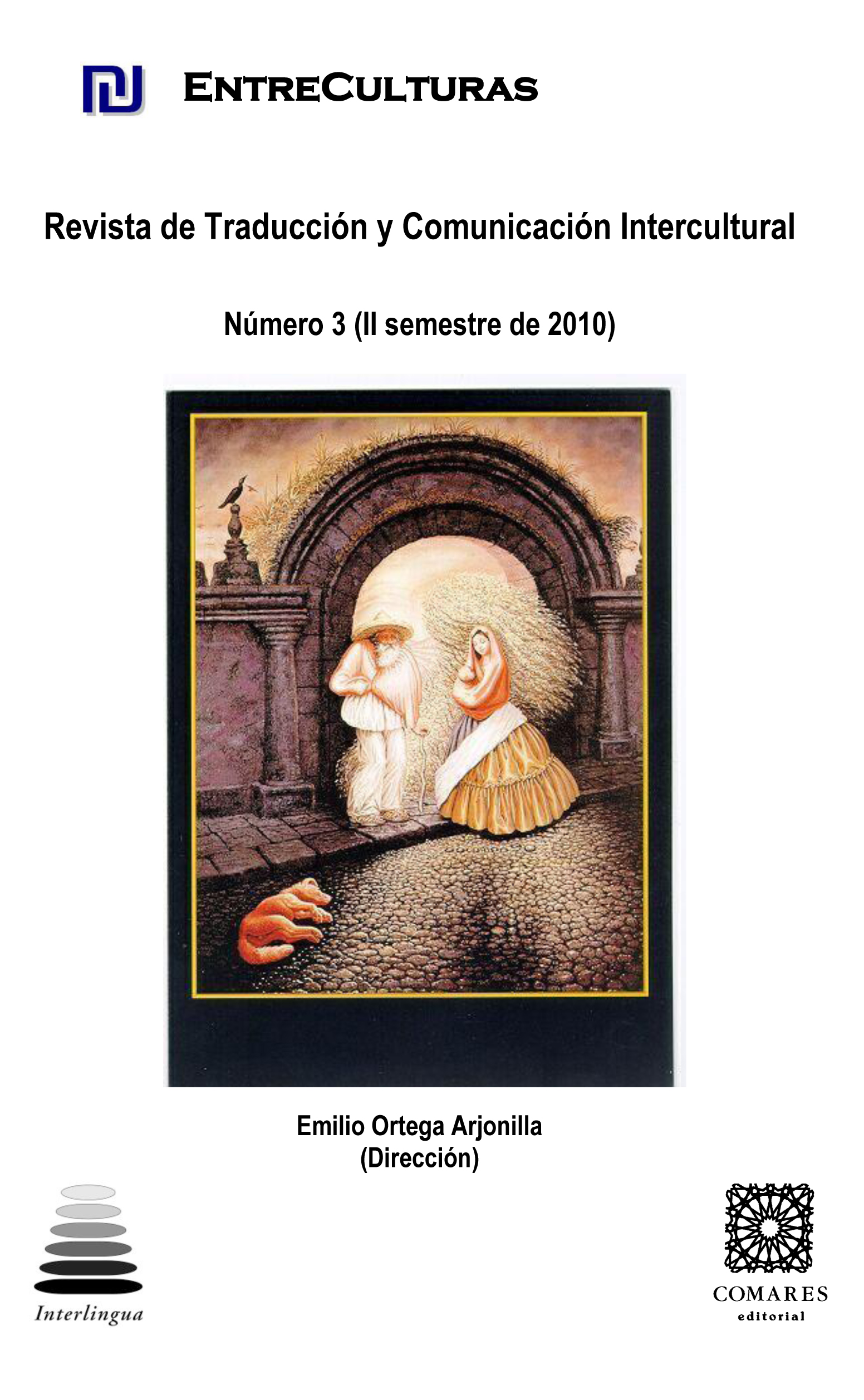APLICACIONES DE TRADUCCIÓN BASADAS EN MEMORIAS DE DATOS. DESARROLLO Y PERSPECTIVAS DE FUTURO
DOI:
https://doi.org/10.24310/Entreculturasertci.vi3.11627Palabras clave:
Herramientas de traducción basadas en memorias de datos, traducción automática (TA), traducción asistida por ordenador (TAO)Resumen
Al hablar de tecnología aplicada a la traducción con frecuencia se establece una distinción entre los conceptos de traducción automática, que se considera un empeño quimérico, y la traducción asistida, a cuyas herramientas de ayuda al traductor se concede gran importancia. En el presente artículo analizamos las tecnologías basadas en la reutilización de segmentos de traducción que tienen su origen en los modelos estadísticos de traducción automática y que surgieron como consecuencia del aparente fracaso de los modelos basados en reglas. Por último analizamos las tendencias actuales de aplicación de esas herramientas de traducción en el entorno actual de globalización y de generalización del acceso a la red.
Descargas
Métricas
Citas
ALPAC (1966): Languages and machines: computers in translation and linguistics. A report by the Automatic Language Processing Advisory Committee, Division of Behavioral Sciences, N.A.S., N.R.C. Washington, D.C., National Academy of Sciences, National Research Council, 1966.
ARTHERN, P. J. (1979): “Machine translation and computerized terminology systems: a translator’s viewpoint” en Snell, B. M. (ed): Translating and the computer. Proceedings of a seminar, London, 14th November 1978. Amsterdam, North-Holland.
BAR HILLEL, Y. (1960): The present status of automatic translation of languages, Advances in Computers 1, 91-163.
—(1964): Language and Information. Reading, MA, Addison Wesley.
BROWN, P. F., et al. (1988): “A statistical approach to language translation”, Computational Linguistics 16, 79-85.
— LAI, J. C. y MERCER, R. L. (1991): “Aligning sentences in parallel corpora”, en 29th Annual Meeting of the Association for Computational Linguistics: proceedings of the conference, 1991 Jun 18, Berkeley, California, [ACL].
CARL, M. y HANSEN, S. (1999): “Linking Translation Memories with Example-Based Machine Translation?. Machine Translation Summit VII, Singapur, 617– 624.
CHEN, K. y CHEN H. (1995): “Machine Translation: An Integrated Approach”, en Proceedings of the Sixth International Conference on Theoretical and Methodological Issues in Machine Translation TMI 95.
GARCIA, I. (2005): “Long term memories: Trados and TM turn 20”. The Journal of Specialised Translation 4, 18-31.
HARRIS, B. (1988): “Bi-text, a new concept in translation theory”, Language Monthly 54, 8-10.
KAY, M. (1980): The Proper Place of Men and Machines in Language Translation. CSL- 80-11, Xerox Corporation.
LAGOUDAKI, E. (2006): TM Survey: Translation Memory Systems, enlightening users’ perspective. Imperial College London. Disponible en http://www.atril.com/docs/tmsurvey.pdf [Consulta: 10-1-2010].
LONSDALE D. (2007): “From ALPS to Alpnet (and beyond)”. Disponible en http://www.mtarchive.info/Lonsdale-2007.pdf [Consulta: 12.10.10].
MELBY, A. K. (1981): “Translators and machines – can they cooperate?” Meta 26(1), 23-34.
NAGAO, M. (1984): “A Framework of a Mechanical Translation between Japanese and English by Analogy Principle”, en Elithorn, A. y Banerji, R.
(eds.): Artificial and Human Intelligence. North-Holland, Amsterdam.
SNELL, B. M. (ed) (1978): Translating and the computer. Proceedings of a seminar, London, 14th November 1978. North-Holland, Amsterdam.
TAUS (2009): Edinburgh, March 25-27, 2009. Disponible en: http://www.translationautomation.com/meetings/edinburgh-march-25-27-2009.html. [Consulta 10.05.2009].
SADLER, V. (1991): “The Textual Knowledge Bank: Design, Construction, Applications”, en International Workshop on Fundamental Research for the Future Generation of Natural Language Processing (FGNLP), Kyoto, Japon.
SOMMERS, H. (2003)”An Overview of EBMT” en Carl, M y Way, A. (eds.): Recent advances in example-based machine translation. Dordrecht, Kluwer Academic Publishers.
Descargas
Publicado
Cómo citar
Número
Sección
Licencia
Todos los contenidos publicados en Entreculturas. Revista de traducción y comunicación intercultural están sujetos a la licencia Creative Commons Reconocimento-NoComercia-Compartirigual 4.0 cuyo texto completo puede consultar en <http://creativecommons.org/licenses/by-nc-sa/4.0>
- Se pueden copiar, usar, difundir, transmitir y exponer públicamente, siempre que:
- Se cite la autoría y la fuente original de su publicación (revista, editorial y URL de la obra).
- No se usen para fines comerciales.
- Se mencione la existencia y especificaciones de esta licencia de uso.
Los derechos de autor son de dos clases: morales y patrimoniales. Los derechos morales son prerrogativas perpetuas, irrenunciables, intransferibles, inalienables, inembargables e imprescriptibles. De acuerdo con la legislación de derechos de autor, Entreculturas. Revista de traducción y comunicación intercultural reconoce y respeta el derecho moral de los autores/as, así como la titularidad del derecho patrimonial, el cual será cedido a la Universidad de Málaga para su difusión en acceso abierto. Los derechos patrimoniales, se refieren a los beneficios que se obtienen por el uso o divulgación de las obras. Entreculturas. Revista de traducción y comunicación se publica en open access y queda autorizada en exclusiva para realizar u autorizar por cualquier medio el uso, distribución, divulgación, reproducción, adaptación, traducción o transformación de la obra.
Es responsabilidad de los autores/as obtener los permisos necesarios de las imágenes que están sujetas a derechos de autor.





7.png)
